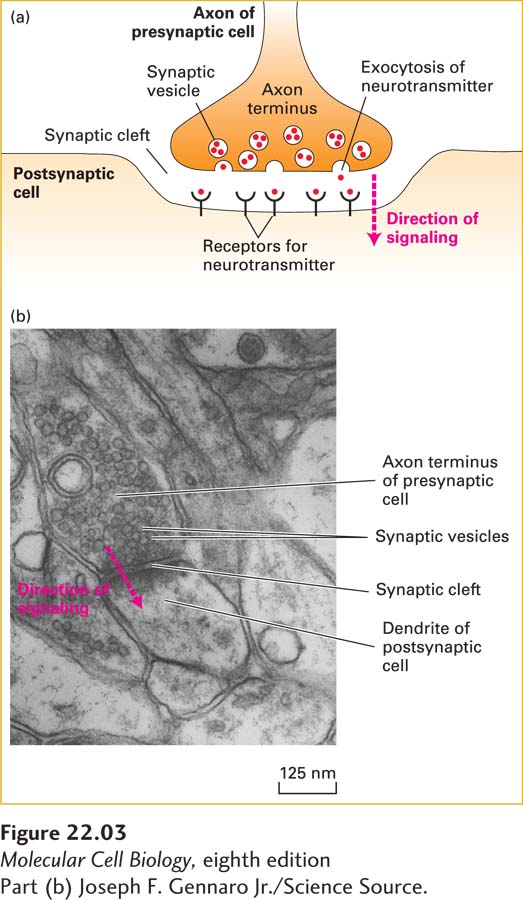Information Flows Between Neurons via Synapses
What starts an action potential? Axon termini from one neuron are closely apposed to dendrites of another, at junctions called chemical synapses or simply synapses (Figure 22-3). The axon terminus of the presynaptic cell contains many small vesicles, termed synaptic vesicles, each of which is filled with a single kind of small molecule known as a neurotransmitter. Arrival of an action potential at a presynaptic terminus causes anv influx of calcium that triggers exocytosis of a small number of synaptic vesicles, releasing their content of neurotransmitter molecules.

Neurotransmitters diffuse across the synapse in about 0.5 ms and bind to receptors on the dendrite of the adjacent neuron. Binding of neurotransmitter triggers opening or closing of specific ion channels in the plasma membrane of postsynaptic cell dendrites, leading to changes in the membrane potential in this localized area of the postsynaptic cell. Generally these changes depolarize the postsynaptic membrane (making the potential less inside negative). The local depolarization, if large enough, triggers an action potential in the axon. Transmission is unidirectional, from the axon termini of the presynaptic cell to dendrites of the postsynaptic cell.
In some synapses, the effect of the neurotransmitters is to hyperpolarize and therefore lower the likelihood of an action potential in the postsynaptic cell. A single axon in the central nervous system can synapse with many neurons and induce responses in all of them simultaneously. Conversely, sometimes multiple neurons must act on the postsynaptic cell roughly synchronously to have a strong enough impact to trigger an action potential. Neuronal integration of depolarizing and hyperpolarizing signals determines the likelihood of an action potential.
Thus neurons employ a combination of extremely fast electrical transmission along the axon with rapid chemical communication between cells. This is known as electrochemical signaling. Now we will look at how a network of neurons, a circuit, can achieve a useful function.